/ Home / Barcelona Movie Walks
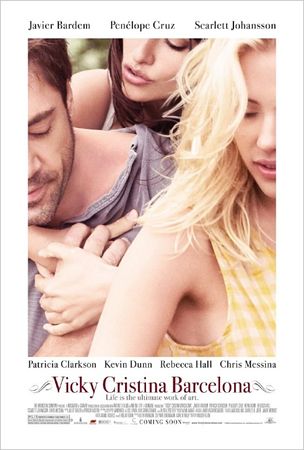
|
The Barcelona of Woody Allen
The Woody Allen’s Barcelona route is based on the film Vicky Cristina Barcelona, which was mainly filmed in Barcelona during summer 2007. Asturias and New York are two of the other locations used in the film. The film was presented on 17th May 2008 at the Cannes Film Festival and premiered in US cinemas on 15th August 2008. The San Sebastián Film Festival opened on 18th September and the film premiered on the following day in cinemas around Spain. This Catalan-American co-production is Woody Allen’s first film in Spain. It tells the story of two young American girls who decided to spend a summer in Barcelona. An encounter with a painter and his ex-wife, who is also an artist, brings about a change in their plans. Barcelona provides the dazzling backdrop to the film. The modernista architecture, Gaudí, the museums, cuisine, the charming narrow streets and squares tucked away in the old quarter are real locations which reaffirm the city’s place as a magnet for lovers of cultural tourism. more information >> |
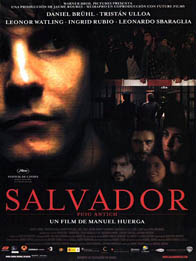
|
The Barcelona of "Salvador"
The route "The Barcelona of Salvador" is based on the film "Salvador (Puig Antich)", which was shot mainly in Barcelona in 2005. Other locations included are Valencia, the Montseny region and Toulouse. The film was presented at the Cannes Film Festival on 23rd May 2006 and premiered in Spanish cinemas on 15th September 2006. The Catalan-British co-production is based on rigorously documented real events which took place during the last years of the Franco regime, a period relatively unexplored by film-makers. It tells the story of Salvador Puig Antich, a young anarchist who fights for freedom by every possible means, aware of the possible consequences and the tragic and unduly heavy price he would have to pay for his actions, which made him a symbol for an entire generation. Barcelona forms the main backdrop to Salvador’s life and activities with his colleagues from the anarchist group MIL. The Gothic Quarter, the University, the Model Prison and Montjuïc Cemetery are all places which played a prominent role in Salvador’s life. more information >> |
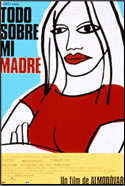
|
The Barcelona of Pedro Almodovar
The “Pedro Almodóvar’s Barcelona” route is based on his film "All About My Mother", which was mainly shot in Barcelona in 1998. It opened on 16th April 1999 and tells the story of Manuela, played by Cecilia Roth, a mother who travels to Barcelona in search of the father of her son to tell him the dreadful news that the boy has died. In spite of her despair, Barcelona becomes her only future. Barcelona has a soothing effect on this grief-stricken woman. The city with its sea, sun and trees helps her recover. During her search, Manuela encounters the typical characters of Almodóvar’s films, such as Agrado (Antonia San Juan), a big-hearted transvestite who has a positive view of life; the diva Huma Rojo (Marisa Paredes) and her difficult lover (Candela Peña); the sister of charity (Penélope Cruz) and her mother (Rosa Maria Sardà) who fakes Chagall paintings. For the first time, Almodóvar decided that the main setting for one of his films would be Barcelona instead of Madrid, and feature such well-known landmarks as the Sagrada Família and the Palau de la Música Catalana. more information >> |
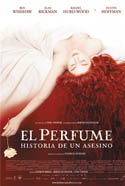
|
The Barcelona of Perfume
The "Barcelona of Perfume" is based on the film "Perfume: The Story of a Murderer", which was filmed in Barcelona, Catalonia and Provence in 2005. It premiered on 14th September 2006 in Germany and on 24th November 2006 in Spain, and is based on the 1985 novel of the same name by the German author Patrick Suskind, which soon became a worldwide best-seller. It relates the story of Jean-Baptiste Grenouille, a child marked at birth. His exceptional sense of smell and lack of personal scent make him a special being who is rejected by society. His obsession with creating a unique perfume from the essence of young girls leads him along a path fraught with incident which has tragic consequences. According to the film production team, Barcelona provided the ideal natural setting in order to recreate 18th-century Paris. The streets, squares and buildings in Barcelona’s Gothic Quarter and other parts of the city brought to life the story of an obsession based around scents and perfumes. more information >> |
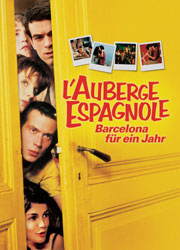
|
The Barcelona of Erasmus Students
The “Erasmus Students’ Barcelona” route is based on the film “L’Auberge Espagnole”, shot in Paris and Barcelona in 2001. This Franco-Spanish co-production was presented at the Cannes Film Festival on 17th May 2002 and premiered at French cinemas on 19th June 2002 and in Spain on 22nd November. It is considered to be the first “Erasmus movie”, or, in other words, it uses the European university exchange programme Erasmus to develop a plot and put its message across. The film tells the story of a French graduate student who goes to study in Barcelona as part of the Erasmus Scheme and shares an apartment with seven other students from all over Europe. In this mini Tower of Babel he lives a somewhat chaotic and informal life, marked by a permanent diversity which is continually on show. In the words of the director Cédric Klapisch, Barcelona was the ideal city to shoot this film, because it is highly photogenic. He also added that it is a city that has attained a mythical status for many young people in Europe who dream of visiting it. La Rambla, the Park Güell, the Sagrada Família and the Barceloneta beaches are just some of the areas that reveal this open, Mediterranean city steeped in history and culture. more information >> |
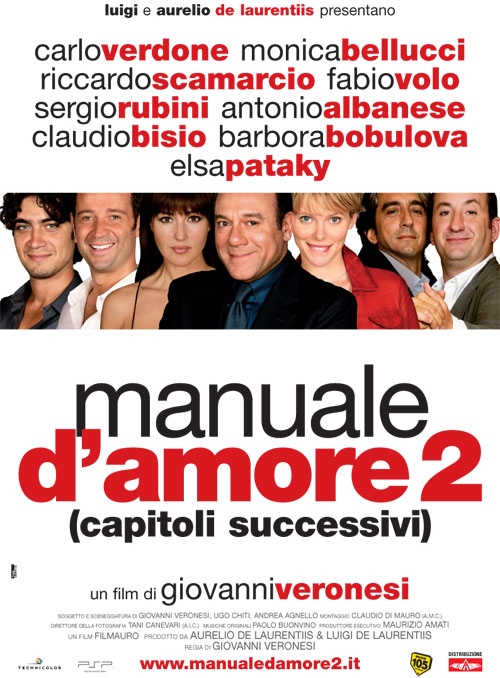
|
The Barcelona of Manuale d’Amore
The “Barcelona of Manuale d’amore 2” tour is based on the film “Manuale d’amore 2 (capitoli successivi)“, which was filmed in Rome and Barcelona in 2006. This Italian production premiered in Italy on 19th January 2007 and in Spain on 16th February, and is the natural and logical continuation of the film “Manuale d’amore”, which opened in 2005. Following the worldwide success of “Manuale d’amore” (four episodes that take an amusing look at different phases of love) the Italian filmmaker Giovanni Veronesi returns to the structure and spirit of the first film to bring us four new episodes with love as their linking thread. Two of the episodes take place in Barcelona and are used by Veronesi in order to compare specific social breakthroughs in Spain in comparison with Italy, such as IVF and same-sex marriages. From the dark night of Rome, the city where part of the film is set, the viewer is transported to Barcelona with its luminous skies. The Sagrada Família, the Gothic Quarter, the Olympic Village, the Olympic Marina and the beaches of the Barceloneta are just some of the locations that show us a Mediterranean city steeped in history, known for its ground-breaking design and tolerance of others. more information >> |